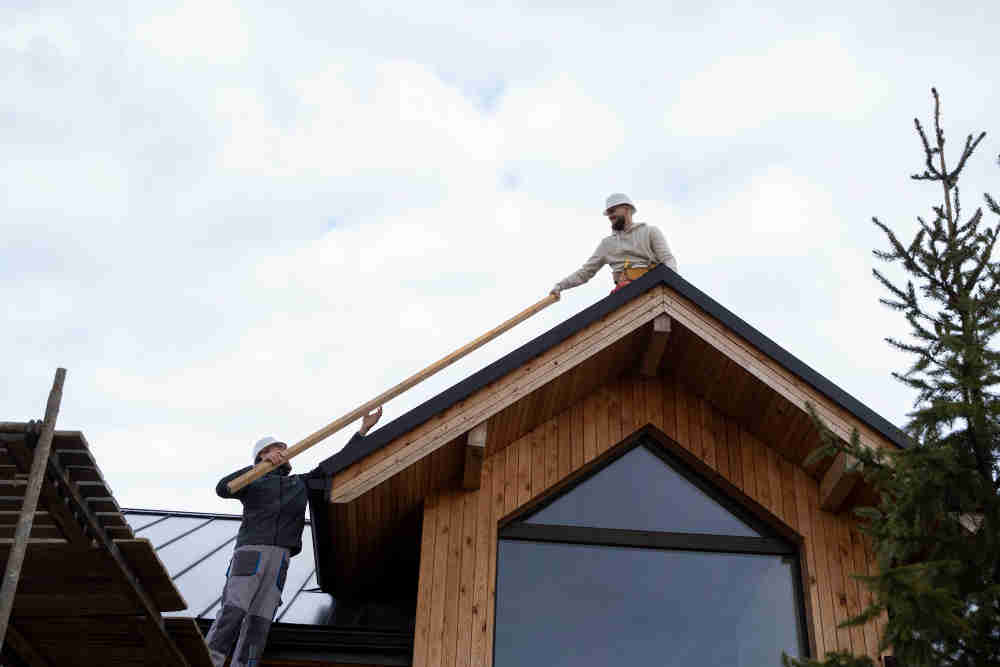Understanding how your home is constructed and the materials involved can significantly enhance your ability to maintain and care for it effectively. This knowledge not only helps in preserving the aesthetic and structural integrity of your home but also ensures it remains a safe and comfortable environment.
This article delves into the basics of how homes are typically built, and provides practical advice on how to maintain them.
Construction Basics
Most homes are constructed using a combination of foundational, structural, and finishing materials. The process begins with laying a foundation, which is most commonly made of poured concrete or concrete blocks. This foundation supports the entire structure and must be robust and level to prevent future issues.
Above the foundation, the frame of the house is constructed. This skeleton typically consists of wood or steel and forms the basis for walls, floors, and roofs. The framing stage is crucial as it dictates the layout and overall stability of the home.
Exterior walls are then built using materials like brick, wood, or siding, depending on the architectural style and climate considerations. Insulation is added between the wall studs, and drywall is used to cover the interior frames. The roof, usually made from shingles, tiles, or metal, is designed to provide protection from the elements while complementing the aesthetic of the home.
Essential Maintenance Tips
1. Regular Inspections: Conduct annual inspections of your home to check for any structural damages or issues that need attention. Look for signs of water damage, cracks in the foundation or walls, roof damage, and any other structural irregularities that could worsen over time.
2. Maintain Your Roof: The roof is one of the most critical components of your home. Inspect it regularly for damaged or missing shingles and clear gutters and downspouts to prevent water accumulation. Ensuring your roof is intact and functional prevents water intrusion, which is a leading cause of structural damage in homes.
3. Keep Moisture Out: Water is a home’s worst enemy. Ensure that your home’s exterior is equipped to handle rain and that your landscaping does not direct water towards the foundation. Inside, be vigilant about leaks and address them promptly. Use dehumidifiers in damp areas like basements to prevent mold growth.
4. Insulate and Seal: Proper insulation and sealing improve energy efficiency and comfort. Check the insulation in your attic, walls, and floors. Insulate your cavity walls and seal any gaps around doors and windows to prevent drafts and heat loss, which can lead to higher energy bills.
5. Care for Your HVAC System: Heating, ventilation, and air conditioning (HVAC) systems require regular maintenance to function efficiently. Change or clean filters monthly (or as recommended), and have the system serviced by a professional at least once a year to maintain optimal performance.
6. Look After Appliances: Extend the life of your home appliances by performing routine maintenance. Clean refrigerator coils, descale your water heater, and clean or replace filters in your dishwasher and dryer. These simple tasks can improve efficiency and prevent breakdowns.
7. Paint and Caulk Regularly: Maintain the interior and exterior paint to protect surfaces and keep your home looking fresh. Caulking around windows, doors, and in bathrooms should be checked and replaced as necessary to prevent water damage and maintain thermal insulation.
Conclusion
Your home is a complex structure made from various materials designed to provide safety, comfort, and shelter. By understanding how your home is built and actively maintaining its critical components, you can preserve its value, prevent significant repairs, and enjoy a more comfortable living environment. Regular maintenance not only saves money in the long run but also enhances the quality of life for all inhabitants.




GIPHY App Key not set. Please check settings